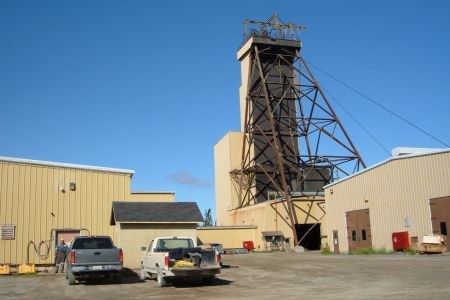With an energy bill of $500,000 a month, Kirkland Lake Gold is continuously looking at ways to reduce its electricity costs.
“Consumption has risen as our production has risen so we are now in the range of paying $6 million annually for electricity,” said Brian Hinchcliffe, president and CEO.
The company has undertaken a number of steps that have had a positive impact. The hydro cost per ton has fallen to $15 from $25, even though its consumption has risen.
“For us, electricity accounts for about six per cent of our operating costs and combined with other components of energy, it is the second biggest cost after labour.”
The company's Phase 1 expansion projects, completed last summer, included a number of initiatives to reduce consumption. Offices and dry facilities included the use of high efficiency heating, lighting, ventilation and hot water storage. The mill strip circuit heaters were upgraded and some new electric scoops were added to the underground haulage fleet to reduce ventilation requirements. Electric diamond drills replaced air ones, where possible, and the number of fans and pumps underground were reduced.
“Now we are in Phase 2 and we will be doubling our ore production to about 1,400 tons per day and going from 80,000 ounces of gold per year to 180,000,” Hinchcliffe said.
“During this phase of production increase we are going to take a whole new pass of reducing our costs of electricity and becoming even more energy efficient with each ton of ore produced.”
The phase, expected to be completed in 2012, also includes the completion of a new 115,000-volt transformer sub-station at the No. 3 shaft mine site.
“There's a new compressor, new pump system and electrical upgrades,” he said. “We invested $20 million in capital expenditures that will have a direct benefit of reducing our electricity consumption.”
A new dry facility to accommodate 600 more workers includes lighting with motion sensors and new shower heads.
“Even the small things, that you would do in your own home to cut costs, can save money for industries like us,” Hinchcliffe said. “Every bit of savings is useful.”
The underground pumping system was upgraded and the cost to run, per day, has dropped from more than $5,000 to about $2,200 resulting in nearly $700,000 a year in savings.
“We also reheat the water that we pump from underground that is hot and use that to heat various things on the surface so we are trying to be efficient from that point of view as well,” he said.
The company is part of the province's Northern Industrial Electricity Rate program. Qualifying industries receive electricity price rebates of two-cents per kilowatt hour when they commit to the preparation and implementation of comprehensive energy management plans.
“We are really pleased to be part of that program and excited about what we will be doing with our management plan over the next few years to reduce our electricity consumption per ton of ore,” Hinchcliffe said.
“One of the things that helped us is the availability of world-class consulting companies, many of which are based in Sudbury, that have electricity experience and knowledge so we didn't have to go too far.”
The company now has a comprehensive energy management plan from 2011 to 2014 that will lay out a process for ongoing energy efficiency initiatives.
“We were lucky since we undertook this expansion program at a time when the province was looking to make sure the mining industry had enough initiatives to be as efficient as possible,” he said. “We are one of the larger energy consumers in Northern Ontario and we did have to do the capital investments so why not do it as efficiently as possible.”
Kirkland Lake Gold will continue to look for savings and Hinchcliffe said it is a culture that has to be bred internally. Currently, more than 700 people are employed at the mine.
“It is important to remind people how much things cost and how much can be saved by doing things in a slightly different way. Underground, the first and foremost focus is making sure everyone works safely. But as part of the emphasis on working productively, best practices in regards to energy consumption are encouraged,” he said.




